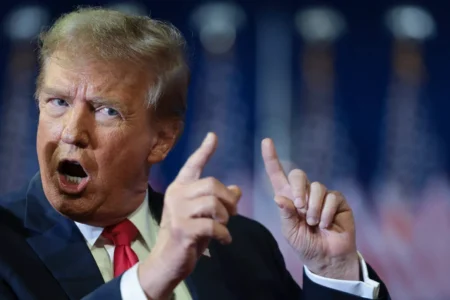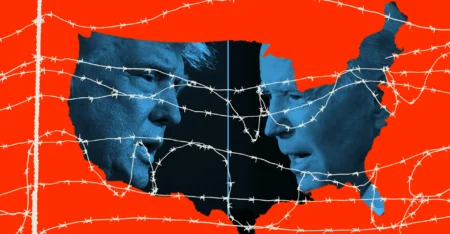NAIROBI, Kenya — A new $250 “visa integrity fee” for travelers to the United States risks piling more pressure on the nation’s struggling travel industry. This new charge comes as overseas arrivals continue to fall due to President Donald Trump’s crackdown on immigration and an increasingly hostile stance toward many foreign countries.
According to U.S. government data, overseas travel to the U.S. fell 3.1% year-on-year in July, reaching 19.2 million visitors. It was the fifth month of decline in 2025, defying earlier expectations that the year’s annual inbound visitors would finally surpass the pre-pandemic level of 79.4 million.
The new visa fee, set to take effect on October 1, adds an additional hurdle for travelers from non-visa waiver countries such as Mexico, Argentina, India, Brazil, and China. The extra charge raises the total visa cost to $442, which is one of the highest visitor fees in the world, according to the U.S. Travel Association.
“Any friction we add to the traveler experience is going to cut travel volumes by some amount,” said Gabe Rizzi, President of Altour, a global travel management company. “As the summer ends this will become a more pressing issue, and we’ll have to factor the fees into travel budgets and documentation.”
International visitor spending in the U.S. is projected to fall below $169 billion this year, down from $181 billion in 2024, according to the World Travel & Tourism Council. The new visa fee reinforces a bleak perception of the U.S. under the Trump administration, whose immigration policies, cuts to foreign aid, and sweeping tariffs have eroded America’s appeal as a destination.
This decline comes even with major events like the 2026 FIFA World Cup and the Los Angeles 2028 Olympics on the horizon. The administration also proposed a new regulation that aims to tighten the duration of visas for students, cultural exchange visitors, and members of the media.
In early August, the administration announced a pilot program, effective August 20, that could require bonds of up to $15,000 for some tourist and business visas in an effort to crack down on visitors overstaying their visas.
Tourism Economics, an Oxford Economics consultancy, had previously forecast in December 2024 that overseas travel to the U.S. would increase by more than 10% year-over-year in 2025. Instead, it is on track to fall by 3%, according to Aran Ryan, director of industry studies at Tourism Economics.
“We see it as a sustained setback, and we anticipate much of it is in place throughout the administration,” Ryan said.
Hardest hit regions and reciprocal concerns
The newest visa fee is likely to hit hardest in Central and South American countries, which have been a rare bright spot for U.S. travel this year. As of May, travel from Mexico to the U.S. was up nearly 14% in 2025, according to the National Travel and Tourism Office.
Arrivals from Argentina rose 20%, and from Brazil, they rose 4.6% year-to-date. Overall, travel from Central America grew 3% and from South America 0.7%, compared with a 2.3% decline from Western Europe.
Also Read: Visa applicants must submit 5-year social media history or risk denial, warns US Embassy
In China, arrivals have remained muted since the pandemic, with July numbers still 53% below 2019 levels. The visa fee also threatens travel from India, where visits are down 2.4% so far this year, driven by a nearly 18% drop in students.
For some, the rise in fees will simply be absorbed as another cost of an already expensive trip to the U.S. “The U.S. has always been selective about its visitors.
If your financial standing isn’t up to par, getting a visa is tough anyway,” said Su Shu, founder of Chinese firm Moment Travel in Chengdu.
As foreign visitors face higher entry fees, U.S. travelers worry about stricter requirements being imposed abroad, said James Kitchen, a travel agent and owner of Seas 2 Day & Travel.
“Travelers have expressed concern around reciprocal fees that may be imposed in the coming months,” Kitchen said.







